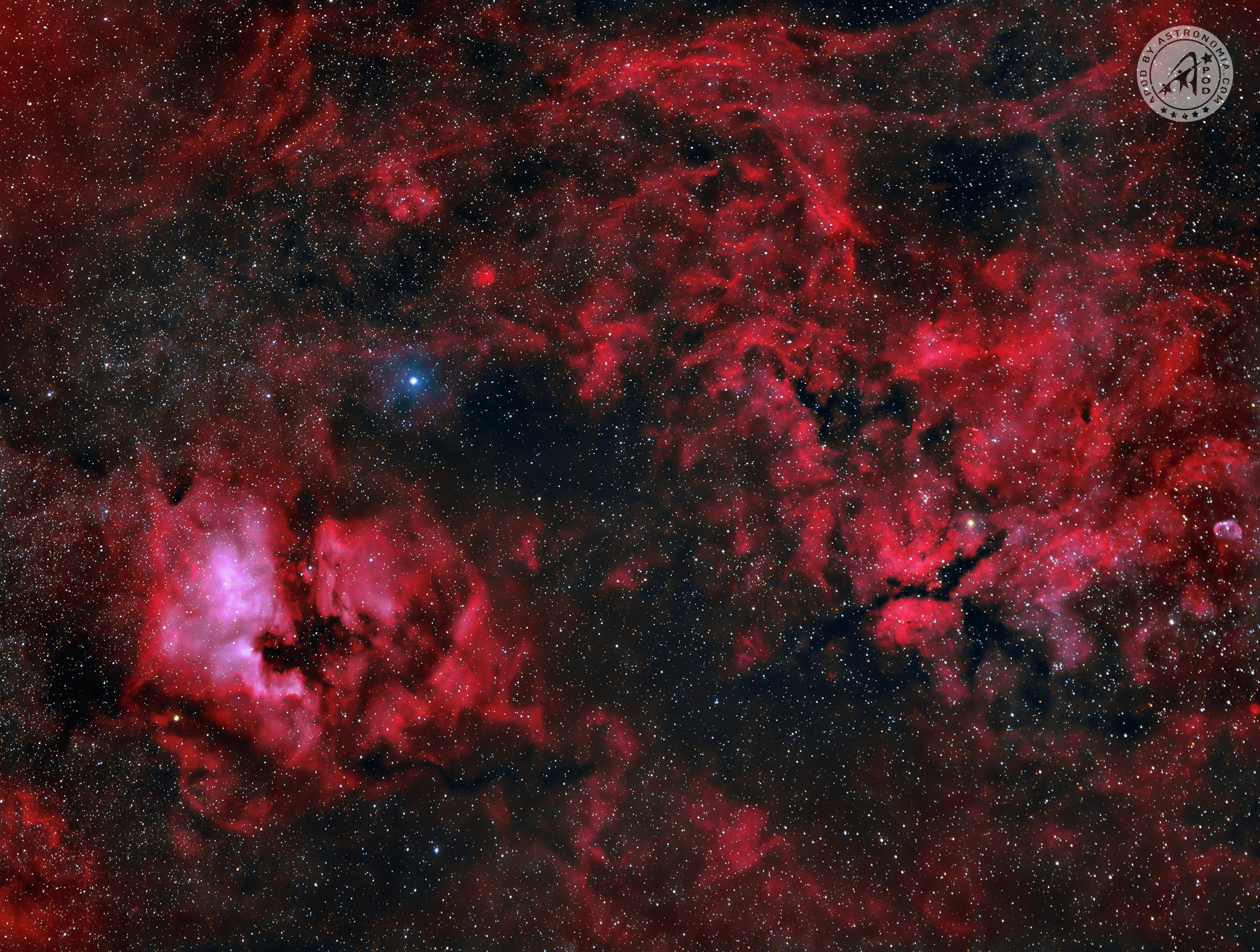La Coda del Cigno
7 Agosto 2021 Stars and Nebulae

This image shows the tail of the constellation Cygnus (Swan) around the stars Deneb and Sadr.
The left side of the frame is dominated by the famous North America Nebula (NGC7000) and the Pelican Nebula (IC5070). The bright blue star is Deneb. It is the brightest known star in visible light. If it was as close to earth as Vega (25 light years), it would shine as bright as a crescent moon!
The right yellowish-white star on the right side is a supergiant named Sadr. Sadr is surrounded by the emission nebula IC1318 one of the several nebulous regions at the centre of Cygnus. IC 1318 is known as the Gamma Cygni Nebula, Sadr Region or the Butterfly Nebula. It is not physically related to Sadr, but merely lies in the same line of sight. The nebula is located much farther away than the star.
At the very edge of the frame on the right is the Crescent Nebula. The star responsible for the nebula’s shape and glow is the Wolf-Rayet star WR 136. The nebula is formed by the star’s fast, powerful stellar wind that collides with the slower wind ejected by the star about 250,000 years ago, when WR 136 expanded to become a red giant. The collision has produced a dense shell, which continues to expand at a speed of 80 km/s.
Prints available: ralf-rohner.pixels.com
Dettagli tecnici:
- ZWO ASI 1600MM Pro, cooled astrocam
- Canon EF 70-200mm f/2.8 L ll @ 70mm
- Baader Hll & Olll ultra narrowband and RGB filters
- Skywatcher AZ-GTI, equatorially mounted
- ZWO ASI 385MC guide cam
- Rig control with a ZWO ASIair
- 20 x 180s Hll
- 30 x 120s Olll
- 20 x 30s RGB
Author: Ralph Rohner
